If you’re a fan of science fiction and have always wondered what it would be like to step foot into a bizarre new world, you can do so without traveling light years through zero gravity. There are countless natural phenomena on Earth with mind-bending colors and formations that look straight out of fantasy novel (or a drug trip) that are only a flight away. Here are seven of the coolest, weirdest places on Earth — from Alaska to Yemen — that are even stranger than fiction.

7 Psychedelic Places in Nature That Look Like They Could Be on Another Planet
1. Socotra Island, Yemen
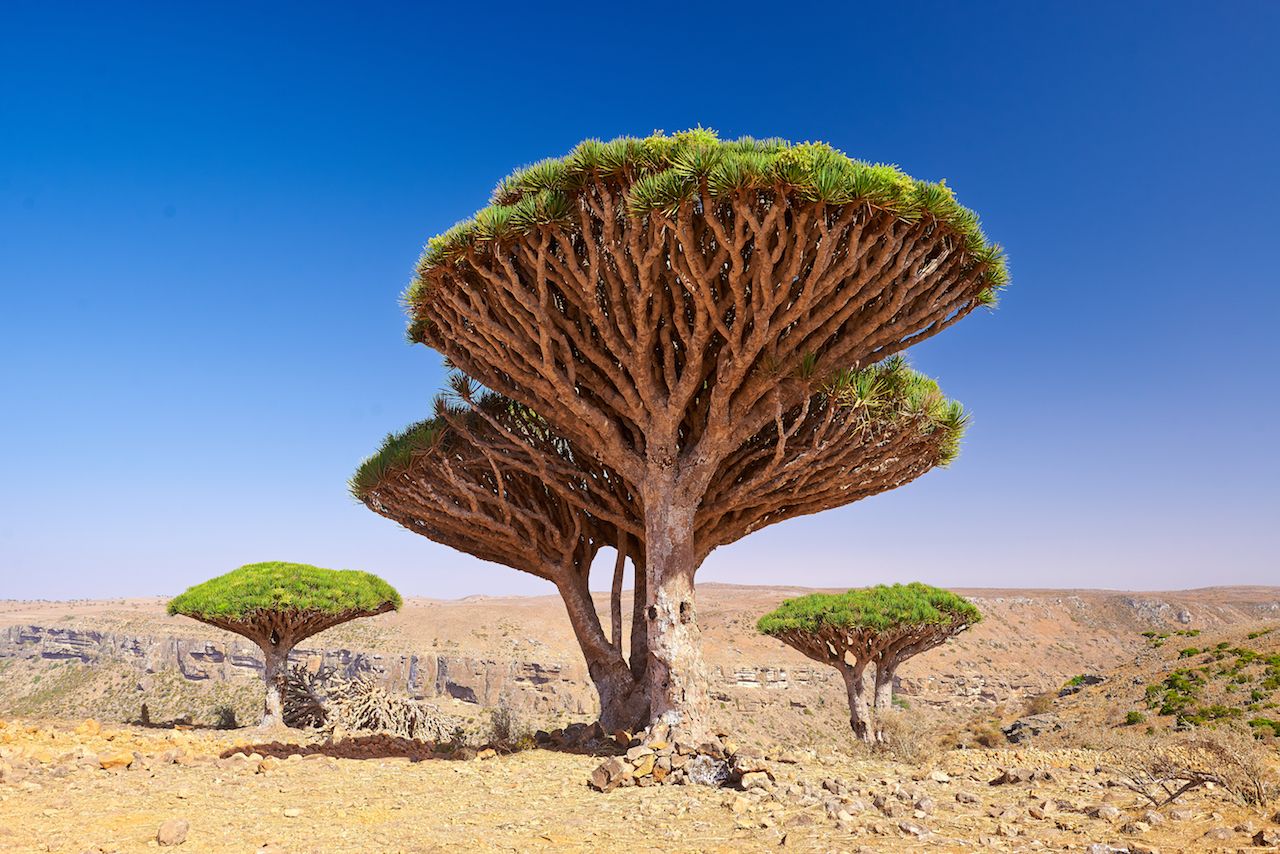
Photo: Sergey Kilin/Shutterstock
Just off the coast of Yemen, Socotra Island is the largest in a small archipelago that has been detached from the mainland for millions of years. This separation has made the island home to a surprising array of endemic biodiversity. The dragon’s blood tree, which emits bloodlike sap and looks like a flying saucer made of twigs perched on long stalks, looms over the craggy, mountainous landscape. The island’s only native mammals are bats, and there are many species of birds that are found nowhere else on earth, such as the Socotra starling. The flora and fauna of Socotra are not the only totally unique inhabitants; genetically, most of the female population of the island has DNA that can be found nowhere else on Earth. The island was visited by 1,000 tourists a year until 2014 when the looming Yemeni civil war seriously impacted Socotra’s accessibility to outsiders. There is a small airport although flights have been canceled since 2015, so the only way to get there is by cargo ship.
2. Kawah Ijen Volcano, Indonesia
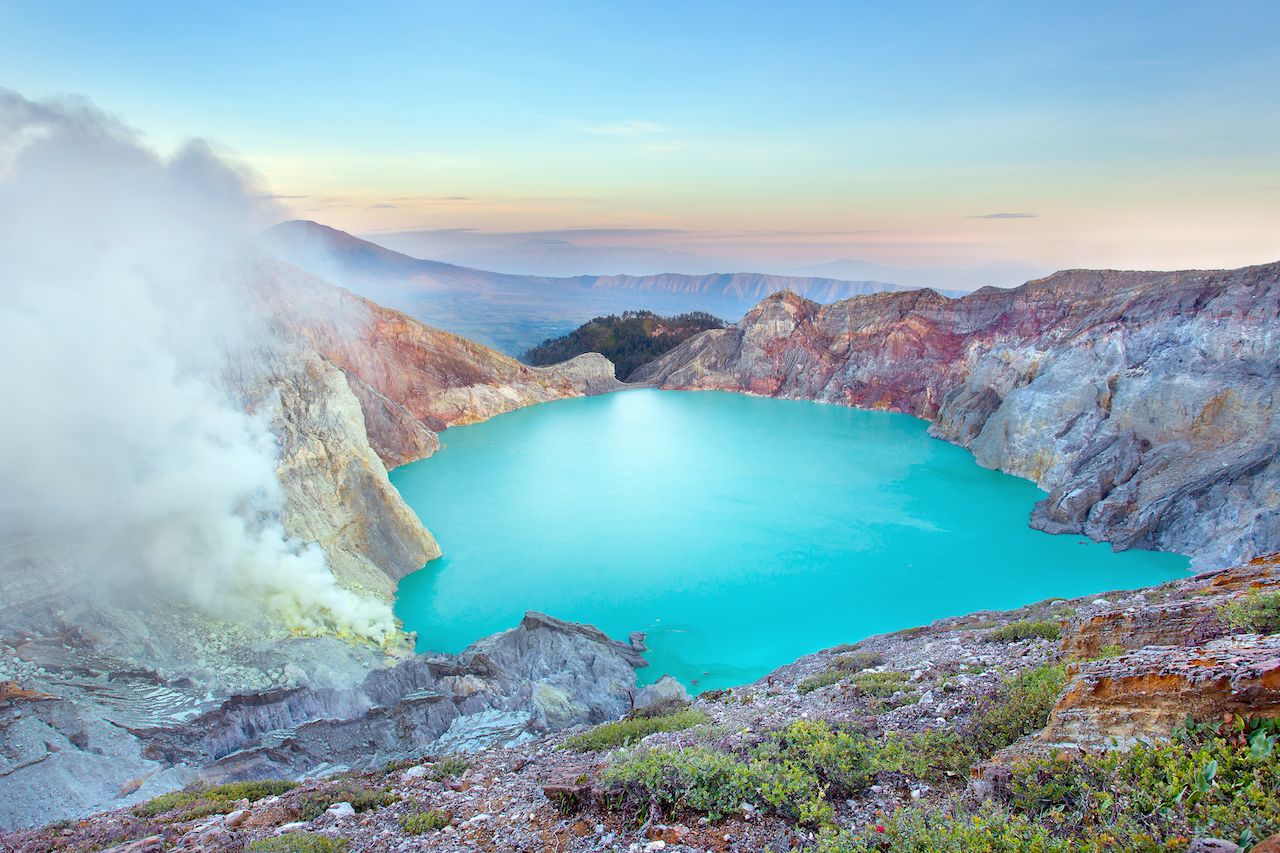
Photo: Alexander Mazurkevich/Shutterstock
Within the plumes of smoke surrounding the top of this active volcano are two features that make East Java’s Kawah Ijen unbelievable: the blue flames spitting into the sulfurous air, and the deep turquoise lake that looks perfect for a swim — if it wasn’t filled with deadly acid. The blue flow looks like lava but is actually caused by gases erupting from deep inside the earth’s crust and forcing themselves to the surface under enormous pressure and heat (up to 600 degrees Celsius); when the gas hits the air, it ignites and spills over the side, sometimes condensing into liquid sulfur. The effect, only visible at night, is one of unearthly beauty. Nearby is Kawah Ijen Crater Lake, a hydrochloric acid pool that is considered to be the most acidic body of water in the world. The lake is warm from the volcanic activity, but swimming is an absolutely terrible idea: the lake is strong enough to melt clothes and human flesh, and the plumes of sulfur gas can cause a breathing hazard if you’re exposed for too long. The climb is not difficult, but all hikers must wear gas masks, and it is not recommended if you have existing breathing issues, such as asthma.
3. Chocolate Hills, Philippines
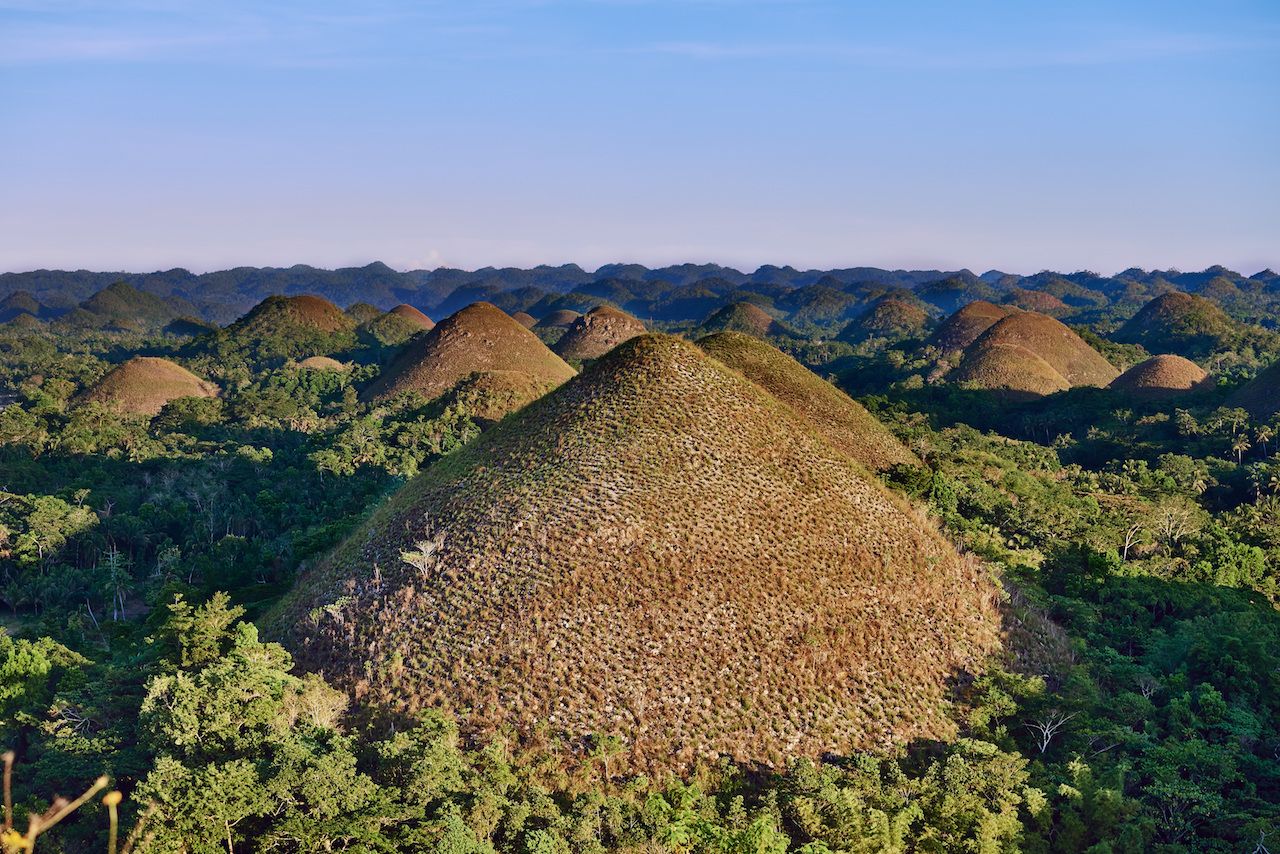
Photo: ostill/Shutterstock
In the middle of the island of Bohol in the Philippines sit 1,300 strangely regular hills of practically identical shape. The local legends say the hills came from a fight between two giants who threw rocks at each other for days until they were exhausted. For most of the year, these pillowy hills match the rest of the verdant jungle landscape, but in the dry season, the lawn-like vegetation turns brown and looks like an expanse of Toblerone bars. There is a viewing platform on one of the taller hills, but you can also get a habal-habal driver to take you on a motorcycle tour through the mounds to other viewing locations, as well to a less-well-known attraction called the Eight Sisters Hillocks — eight hills of similar size in an almost perfectly straight line. Sunrise paints the hills in a dramatic light, so get up early (5:00 AM in the summer months) and climb to the viewing platform. There are few places to stay near the hills, but the newly built adventure park with its campsite — as well as a bicycle zipline, butterfly garden, and zorbing — is a good option.
4. Lake Khiluk, British Columbia
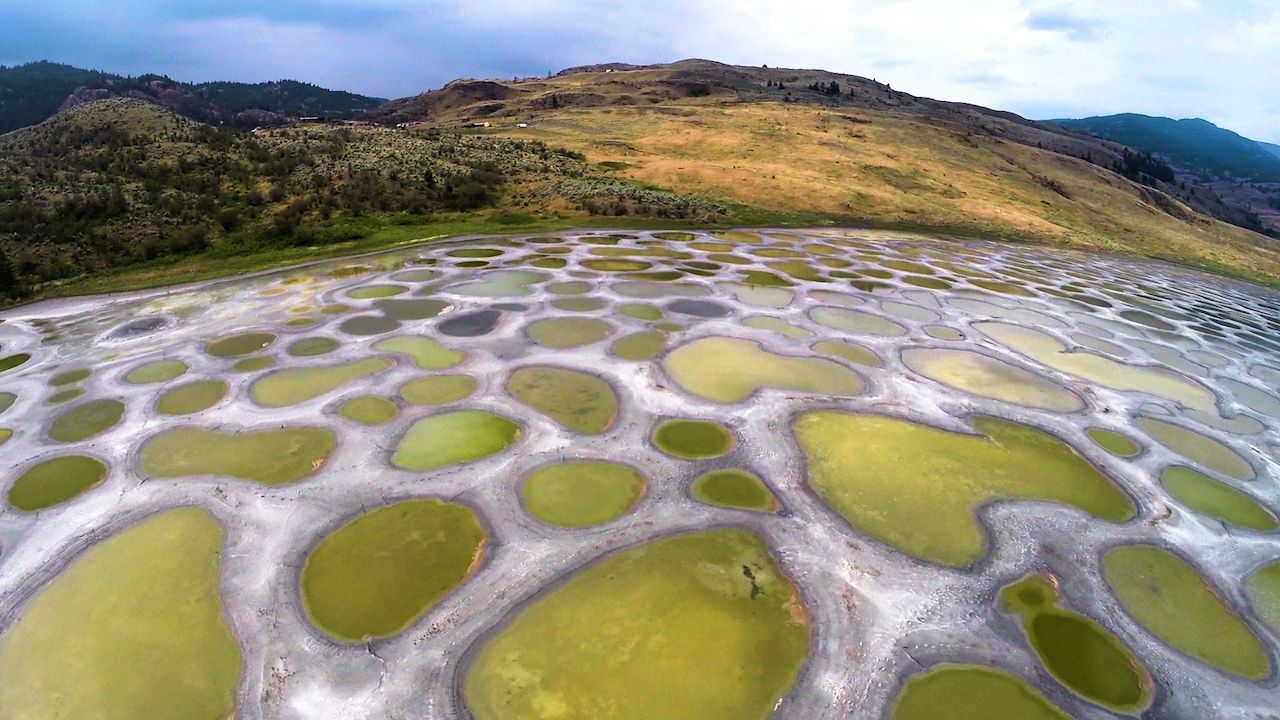
Photo: Carlo Alcos
Known as “Spotted Lake,” Lake Khiluk in northern British Columbia dries up over the summer, leaving heavily mineralized pools, each with a different mineral content. The variety and concentration of minerals are what gives the “spots” their unusual colors. At the height of the dry season, the lake’s high concentration of magnesium sulfate crystallizes and forms natural walkways between the pools (although walking through the area is not allowed for environmental preservation reasons and as a form of respect to the local First Nations people). In 2012, a planetary geologist discovered that the mineral composition of the water was similar to deposits found on Mars; this otherworldly lake might be additional evidence that life could exist on other planets. The area is sacred to First Nations people in both Canada and the United States who believe the minerals of the lake can cure different diseases. Although the land was privately owned for some time, it was returned to the Okanagan Syilx First Nations in 2001.
5. Vinicunca Mountain, Peru
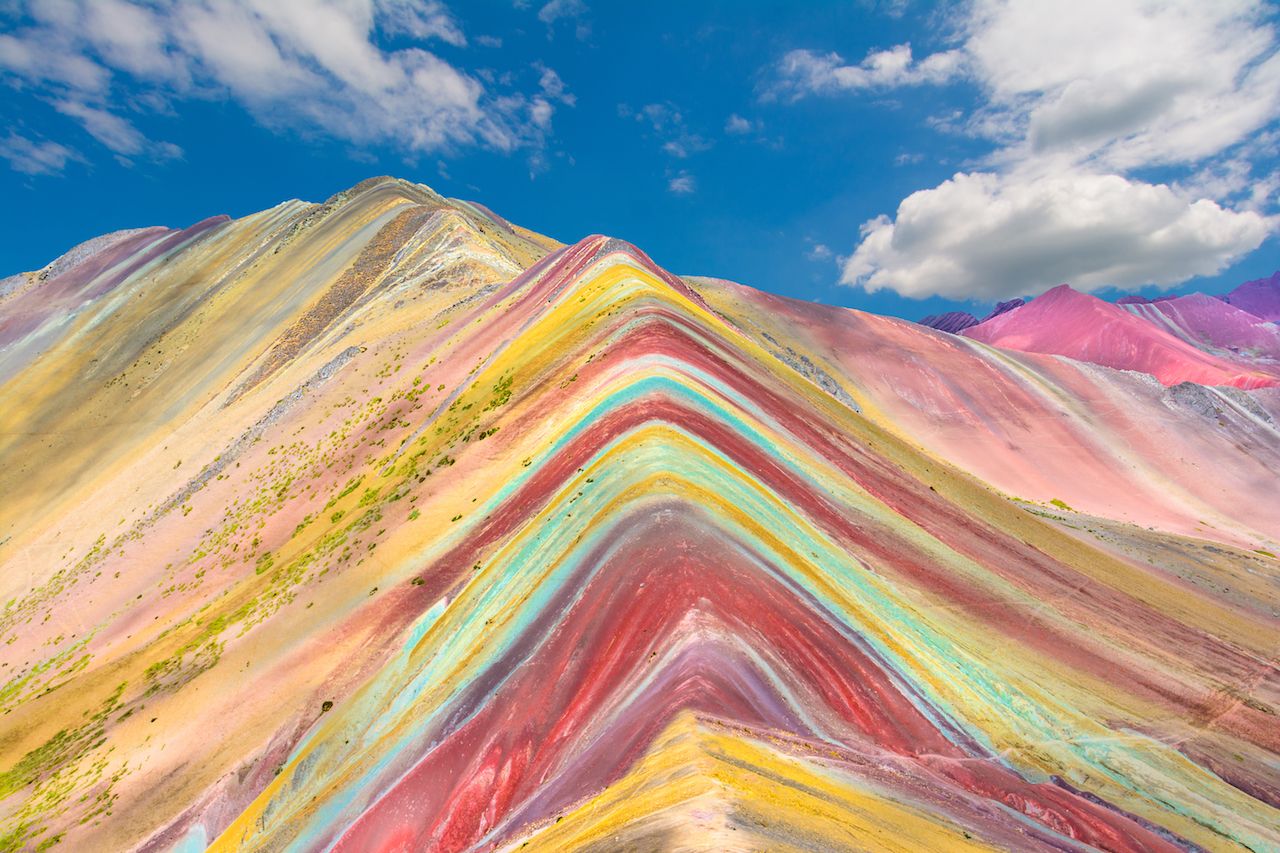
Photo: David Ionut/Shutterstock
Vinicunca, also known as “Rainbow Mountain,” is a peak located deep in the Peruvian Andes. Striped in vibrant blues, reds, and yellows, the mountain culminates at 16,000 feet above sea level. There is a road that winds up the peak, making the summit accessible in only a few hours, but the altitude can seriously impact anyone who isn’t prepared for it. For many years, this unusual formation was hidden under snowpack and ice; however, as the global climate slowly warmed, that ice thawed and revealed the magical landscape beneath. Several local guides offer packages to assist individuals and groups on guided ascents. It is highly recommended to bring someone who knows the terrain with you on the climb.
6. Mendenhall Ice Caves, Alaska

Photo: saraporn/Shutterstock
The Mendenhall Glacier (originally called Sitaantaagu by the Tlingit people) is only 12 miles from downtown Juneau, Alaska, but is accessible primarily by kayak. The caves inside can only be reached by ice climbing over the glacier itself and slipping into its interior. The Juneau Ice Field from which Sitaantaagu emerges is a sheet of white from the outside, but inside the caves, everything is a thousand shades of blue. This happens because the surrounding ice absorbs all light wavelengths except blue, leaving an unearthly glow to the rounded caverns. The bad news is that the caves were caused by the melting of the glacier. Meltwater continues to reshape the caves, and visitors may find that the layout of tunnels and passageways has completely changed from previous maps or visits. In fact, as global temperatures increase, the caves are likely to disappear entirely in the next ten years.
7. Great Rann of Kutch, India
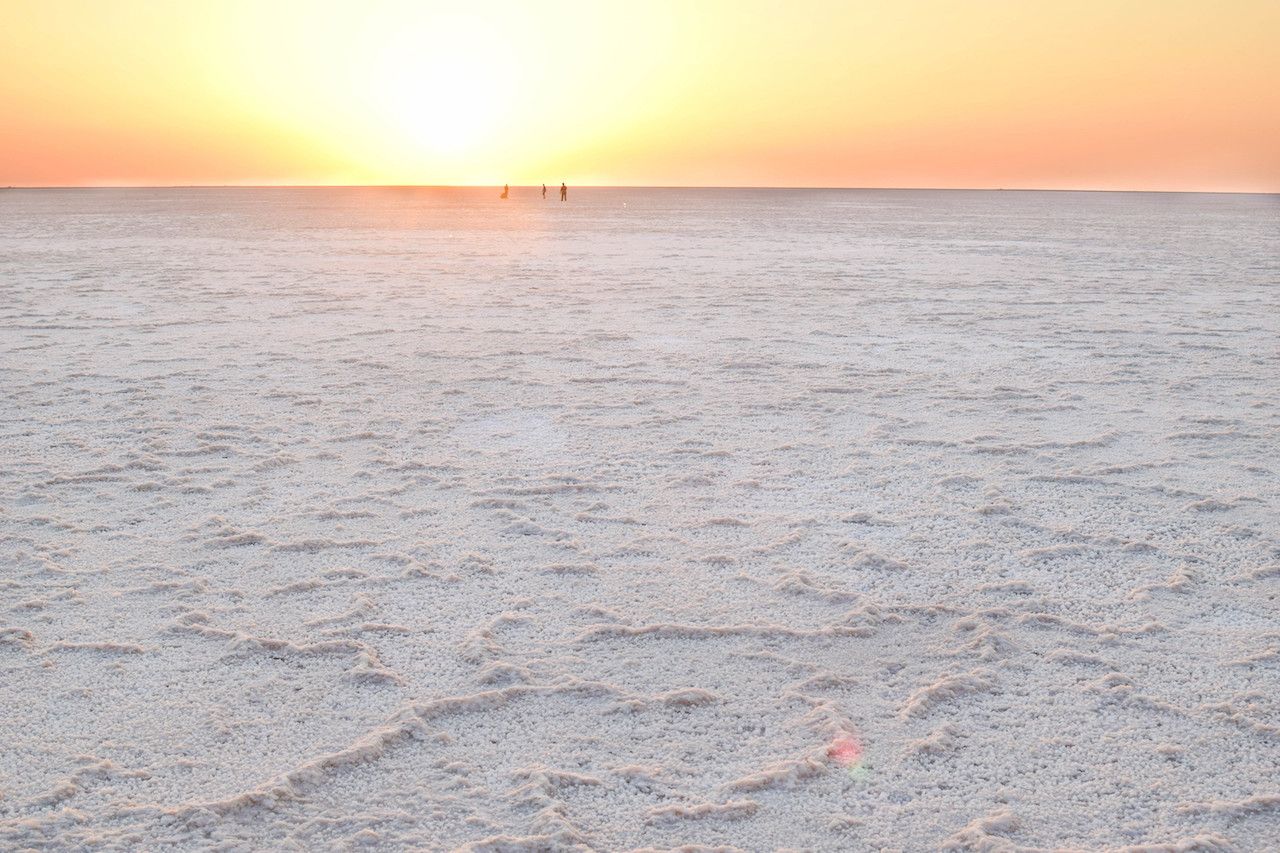
Photo: Shikha a/Shutterstock
Almost 3,000 square miles in size, this vast salt flat in the middle of India’s Gujarat region is pure white — except for the occasional touch of pink from the flocks of flamingos that nest in the rare pockets of thorny scrub. In the monsoon season, the flat fills with standing water, but the beating sun of the summer months dries it to flakes rapidly — temperatures in this region can go as high as 50 degrees Celsius during the day. The remote landscape is surprisingly well populated by migratory birds and other animals, including desert foxes and hyenas, and hosts the Indian Wild Ass Sanctuary, home of an endangered species of wild donkey. To the west of the Rann (which means “desert”) is a 5,000-year-old Indus Valley civilization site called Dholavira with fossilized artifacts that you can explore before heading into the desert’s expanse.